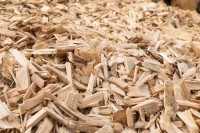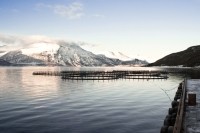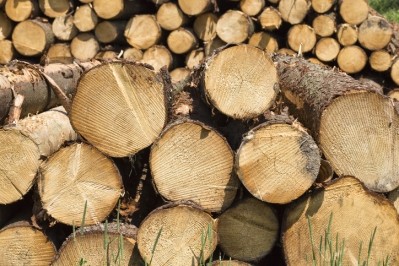Feed protein consortium can ‘see the wood for the trees’

The partners want to transform non-food biomass into feed ingredients by growing protein rich microorganisms on pre-processed woody biomass - co-products of the lumber industry such as wood chips or sawdust.
Arbiom, a developer of non-food biomass processing technology with operations both in France and in the US, is leading the initiative. The firm’s biomass fractionation technology would be used to convert these co-products into a protein meal, called SylPro, targeted at fish feed initially.

Marc Chevrel, chief operating officer, Arbiom, said the project developed out of previous collaborative work; it teamed up with one of the SYLFEED partners, newsprint producer, Norske Skog Golbey, before on BIOSKOG; the goal of that project was to convert woody material into sustainable intermediates for use by the chemical industry as an alternative to fossil carbon resources.
“We had the idea that, actually, what we were doing would be a great substrate to grow microorganisms and to make feed proteins. We saw the potential because of the protein gap in Europe but also in the world in the coming years. We thought that it would be a great use of our technology,” Chevrel told us.
He said the wood to feed concept is economically and environmentally sustainable, and one that can provide new economic development opportunities for biomass-rich regions.
“The forest is growing in Europe and the US. Actually, now, there is more wood grown than harvested by the main users – furniture and pulp and paper mills. That is why we think we have a great solution here – on the one hand, you have a protein gap that will widen in the future and, on the other hand, you have a substrate source, the uses of which are declining.”
Team effort
The other partners in SYLFEED include aquaculture companies, Laxa and the Skretting Aquaculture Research Center (ARC), Icelandic research institute, Matis, and Norwegian firm, Østfoldforskning, along with technical partners, Prayon and RISE Processum.
Matis will oversee the fish feed formulation and SylPro trials while the final validation of the product will be carried out by Laxa and Skretting ARC, said Chevrel.
Prayon is providing the phosphoric acid necessary for pre-treating the woody biomass, while Swedish research center, RISE Processum, which has fermentation technology expertise, will support Arbiom in terms of the biomass fractionation and conversion into microbial proteins, he added.
Østfoldforskning will carry out cradle-to-cradle lifecycle analysis on SylPro. “We want to compare our environmental footprint with other feed proteins.”
EU funding
The SYLFEED won €10.9M in funding under the EU’s Bio-Based Industries Joint Undertaking (BBI-JU). Part of the funding will support the building of a demonstration plant that will be co-located with Norske Skog Golbey’s pulp and paper site in the east of France. Chevrel said that would allow the partners to prove the viability of their process and final product.
Commercial scale production of SylPro is a few years off yet. Chevrel sees that commencing in 2021. “We think the commercial unit could produce around 100,000 tons of dried biomass per year. We want to be sensible – we are not going to jump from lab scale to 1m tons per year. In time, we would look to build a bigger plant. We have not fixed a target yet of how many plants there should be, but the aquaculture market is big enough to accommodate tens of commercial units.
“Our goal is to expand to other species, and to go beyond fish, eventually, to pigs, once the concept has been proven and, obviously, we would also need to be cost competitive to do that.”
Salmon trials
Atlantic salmon trials with the wood biomass derived feed protein, which he said has a similar amino acid profile to fishmeal, are due to begin next year. “We believe that our product can be a very good replacement for fishmeal; we think we can be competitive with fishmeal, which is limited in quantities because there are restrictions on the amount you can fish in the ocean. The aquaculture sector is growing, and the industry is looking for alternative proteins. They are using more and more plant proteins in fish diets, but we see that the industry is very interested in products that would give their feed a better amino acid profile.”
The partners are aiming for price equivalency with fishmeal, initially. “As we grow, and deepen our knowledge of the process, we would aim to decrease the price further.”
Chevrel said the consortium will be really focused on the demonstration program over the next two to three years, to prove that they can produce the product with the right specification, and at the right price, along with it ticking all the boxes on the sustainability side. “We need to prove the technology. We have proven it at the pilot scale; now we need to go a higher level [of proof of concept], and we need to get market validation with the fish trials to have everything ready for commercial deployment. Obviously, we would start talking to potential customers before that. If the demonstration program goes well and we have all the evidence needed by any kind of investor, then we can break ground on a commercial site.”
He said there would be full traceability of the product from wood sourcing to protein production to feed use.
“The advantages of SlyPro will be the sustainable, nutritional and economical value it brings to feed.”
Technology used to convert woody biomass into a protein meal
Arbiom says its process was developed to maximize the value of biomass by extracting each of its fractions under optimal conditions. Its ‘bio-compatible’ process operates at low temperature, which the company explains avoids degradation of the chemical value of the biomass, and separates each fraction to maximize its compatibility with downstream processes.
Moreover, it says use of phosphoric acid in pretreatment increases the efficacy of enzymatic hydrolysis, which lowers processing costs. Phosphoric acid pretreatment also ensures production of sugars with extremely low levels of inhibitory compounds, organic or mineral, claims Arbiom. “The in-house combination of phosphoric acid pretreatment and enzyme development ensures the optimal compatibility of these two crucial steps of biorefining.”










